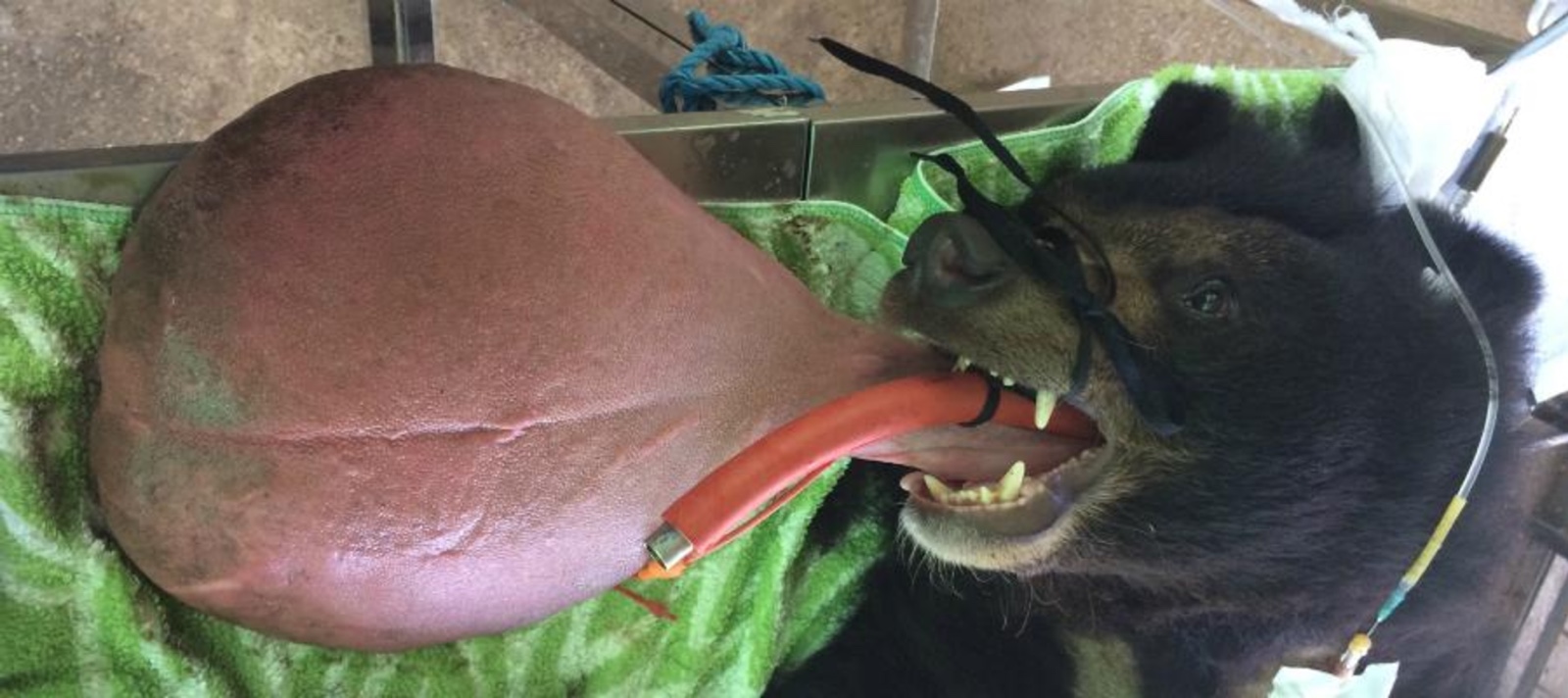Unbearable: An Enormously Swollen Tongue Was Destroying a Bear's Life

A rescued bear with a tongue so large it dragged on the ground has a second chance in life after surgery.
A University of Edinburgh veterinarian joined bear rescue organizations in Southeast Asia to operate on the Asian black bear (Ursus thibetanus). The young bear, nicknamed "Nyan htoo," or "bright," was rescued from illegal sale in Myanmar along with a sibling. Monks at a monastery in Myanmar stepped in to prevent the two bears from being shipped to China, according to the University of Edinburgh.
Unfortunately, Nyan htoo's tongue soon began to swell. In 2016, vets in Myanmar did an operation to remove the enlarged tissue, but the swelling returned. By June 2017, the tongue was bulbous and hard for Nyan htoo to hold up. It dragged on the ground when he played, scraped against his teeth constantly, and forced the bear to lean his head against the side of his cage for support, according to the university. [The 6 Craziest Animal Experiments]
Postsurgical pathology suggests the swollen tongue may have been caused by elephantiasis, a swelling of tissue caused by parasitic worms that are transmitted via mosquito bite. More than 120 million people are infected with these worms (and have lymphatic filariasis) in countries throughout the tropics and sub-tropics of Asia, Africa, the Western Pacific, and parts of the Caribbean and South America, according to the CDC.
The disease, also known as lymphatic filariasis, is caused when worms block the flow of fluid called lymph. Lymph is the body's drainage system; it's made of blood plasma and fluids that flow through lymphatic vessels to be reintegrated into the blood. The immune system also uses the lymphatic system as a home base. Elephantiasis is famous from the late-1800s case of the "Elephant Man," Joseph Carey Merrick, who had severe growths and swelling over his head and body and who was dramatized in a 1980 film by English actor John Hurt. However, Merrick didn't suffer from elephantiasis. For years, people thought that he had neurofibromatosis type 1 (which can manifest as elephantiasis), but in 1986, geneticists identified his condition as Proteus syndrome, according to an article published in 2011 in the Journal of the American Board of Family Medicine.
Elephantiasis was unknown in bears before this case, however.
"This was a really unusual medical condition — never before seen in any species of bear — but we weren't about to give up on Nyan htoo," Nelson said in a statement. "Now, he will be able to eat much more comfortably, sleep in more natural positions and move more freely for the rest of his life."
Sign up for the Live Science daily newsletter now
Get the world’s most fascinating discoveries delivered straight to your inbox.
Editor's Note: This article was updated to clarify that Joseph Merrick did not have elephantiasis and to provide a CDC number for cases of lymphatic filariasis.
Original article on Live Science.

Stephanie Pappas is a contributing writer for Live Science, covering topics ranging from geoscience to archaeology to the human brain and behavior. She was previously a senior writer for Live Science but is now a freelancer based in Denver, Colorado, and regularly contributes to Scientific American and The Monitor, the monthly magazine of the American Psychological Association. Stephanie received a bachelor's degree in psychology from the University of South Carolina and a graduate certificate in science communication from the University of California, Santa Cruz.










